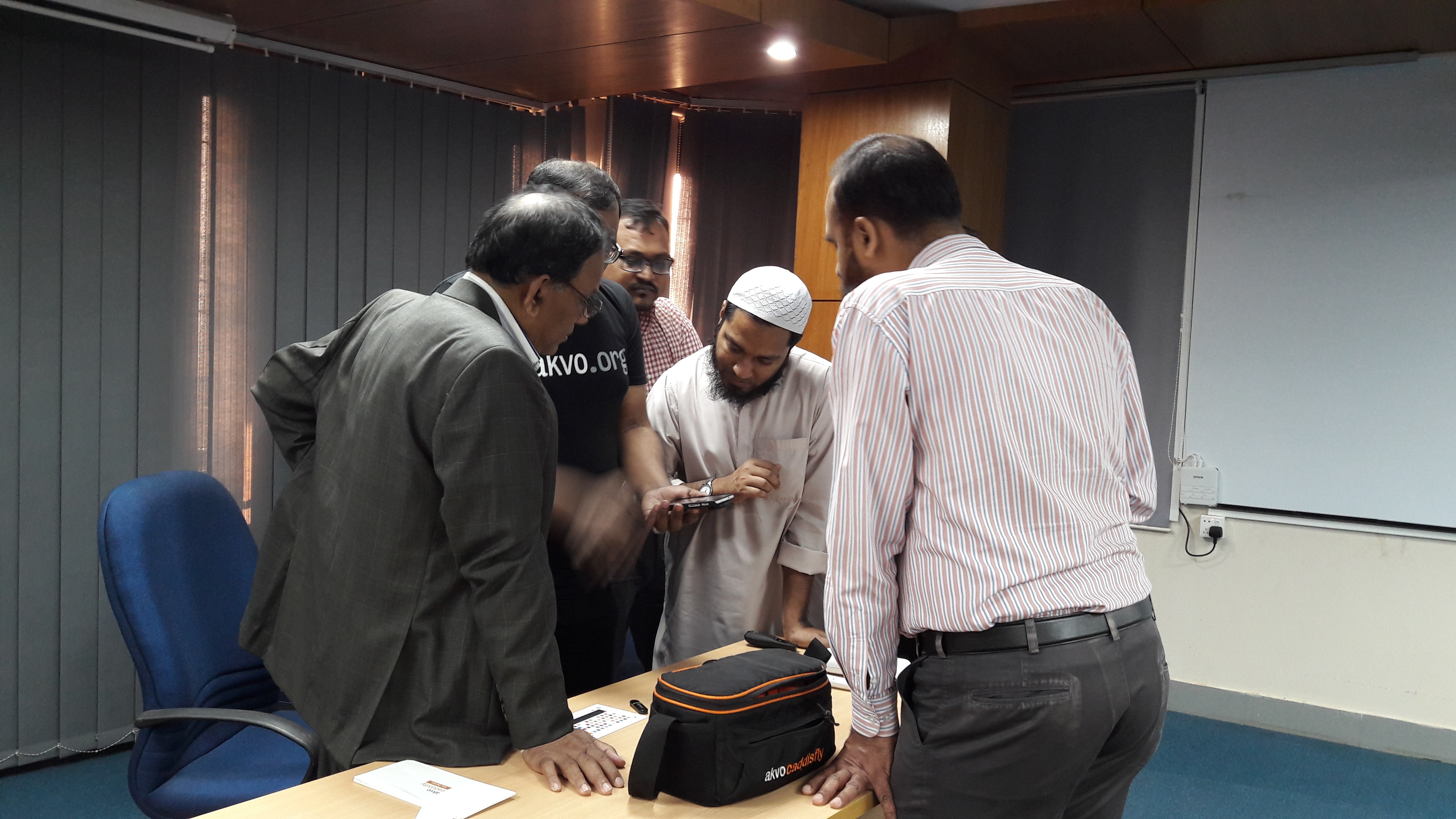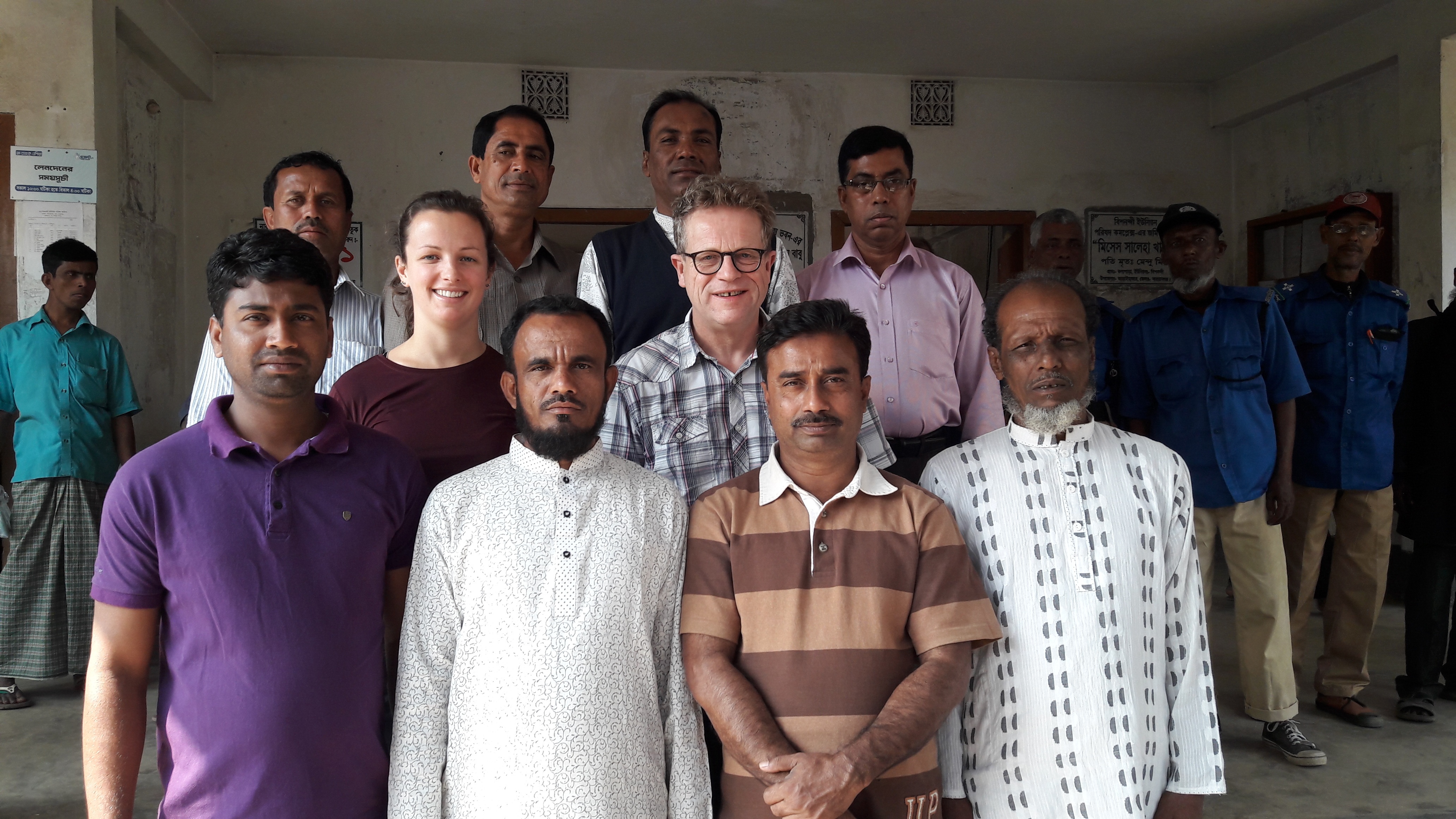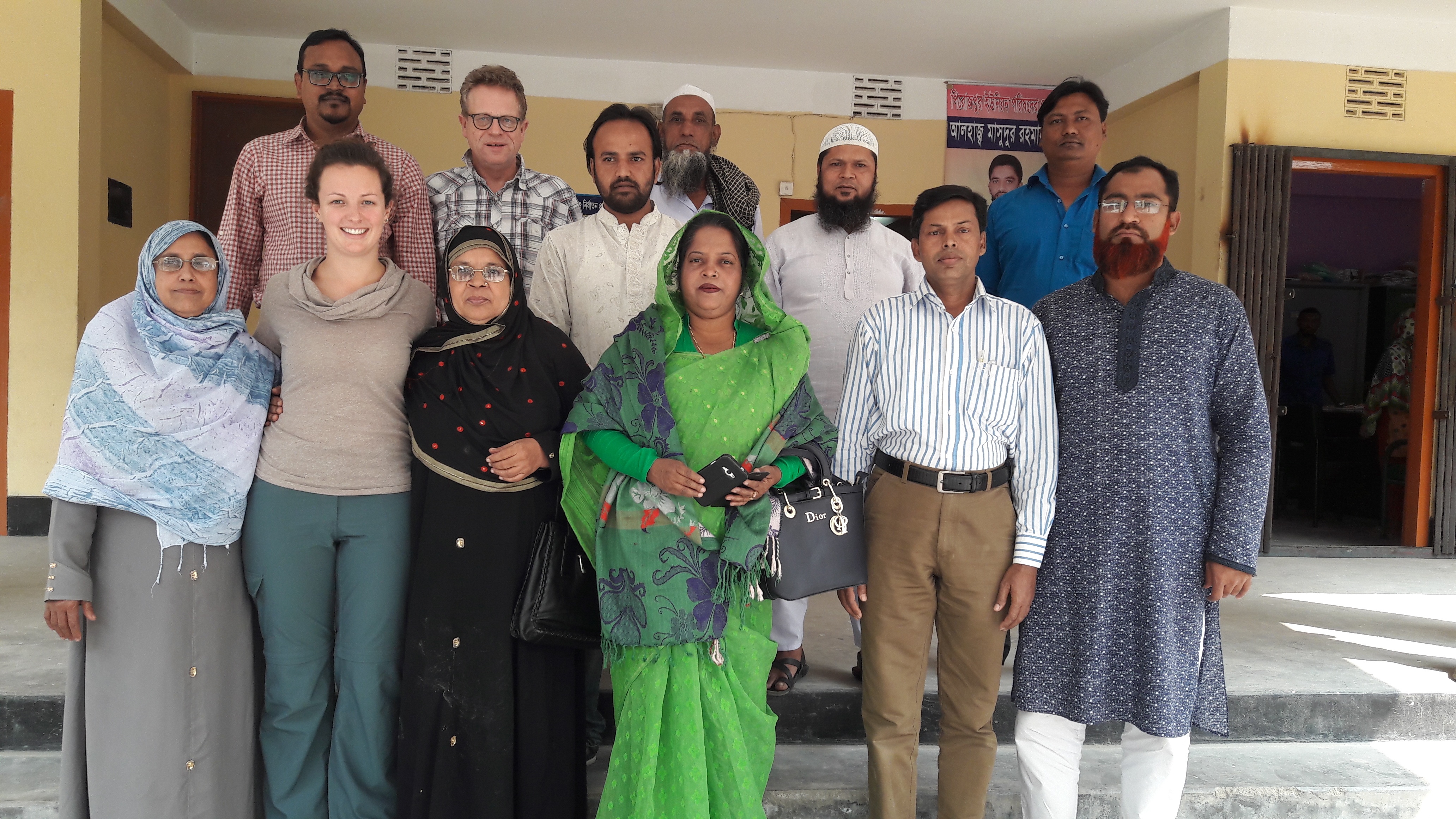Project kick-off took place in Bangladesh between 12-16 February 2017. Team members from Deltares, Akvo, ECL, and ITN-BUET met to discuss the tasks, assignments, expected completion dates, and other logistics during that week.
Meetings were also held with two local river watchdog committees, with the one from Bisnandi Union Parisad on 12 February 2017 and the one from Piruzpur UP Union Parisad on 16 February 2017. Members of these watchdog committees, as well as other members of the community, will be selected and trained to carry out the water quality monitoring.
The 2nd mission of the project took place from 17-21 September 2017. The schedule for the week was as follows:
- Sunday, September 17th:
- 9:00: meeting at ITN-BUET to discuss project update
- 11:30: meeting at DoE to discuss logistics for training event and other project updates
- Monday, September 18th and Tuesday, September 19th: FEWS training at DoE
- Wednesday, September 20th: kick-off water quality monitoring (pH) at Bisnondi Union Parisad (UP)
- Thursday, September 21st: kick-off water quality monitoring (pH) at Piruzpur UP
A short summary of both the FEWS training and the kick-off days for water quality monitoring are provided below.
FEWS training 18-19 September 2017
The training was opened by introductory words from the Director General, Md. Raisul Alam Mondal. Other senior officials, including the Deputy Director of the Dhaka laboratory and Project Director of the ISWAM project, Md. Mustafizur Rahman Akhand, attended the opening session and introduction to FEWS, including a live demonstration of the FEWS Bangladesh system.
The course then began, focusing on practical exercises where participants could practice realistic use cases, such as importing and visualizing data. By the end of the first day, participants had grasped the main concepts from the demonstration use cases, and requested to practice importing additional data from the Turag River. This was prepared prior to the start of the second day of training. Training on the second day began with a recap of the first day and the capabilities of the FEWS system. This was attended by the Director of the Dhaka laboratory, Dr. Md. Sohrab Ali and the Deputy Director of the Dhaka laboratory, Md. Mustafizur Rahman Akhand, as well as all of the course participants. The participants then worked through an exercise to correctly format and import data from the Turag River for January 2017. In total, 16 DoE staff members completed the FEWS training. This includes staff working in enforcement, senior chemists (from both the main office in Dhaka and from regional offices), and laboratory assistants.
Kick-off for water quality monitoring and refresher training at Bisnondi UP (20 September 2017) and Piruzpur UP (21 September 2017)
The kick-off for water quality monitoring had three main parts:
- Distribution of monitoring materials
- Refresher training
- Location selection for each enumerator
The third mission of the project took place from 4-15 February 2018. The schedule for the mission was as follows:
- Sunday, February 4th and Monday, February 5th: participation in meetings regarding designation of ~70 km along the Meghna River as an Ecologically Critical Area (ECA), including the jurisdictions of Bisnondi UP (Feb. 4th) and Piruzpur UP (Feb. 5th)
- Tuesday, February 6th: meeting at ITN-BUET to discuss ISWAM activities (translation of FEWS guide, support during FEWS training), provide FEWS demo and training
- Wednesday, February 7th and Thursday, February 8th: FEWS training at DoE
- Sunday, February 11th: meeting at ITN-BUET to discuss ISWAM activities (dissemination seminar and upscaling plans) and provide advanced FEWS training
- Monday, February 12th: visit to Piruzpur UP to kick-off water quality monitoring for ammonium and phosphate
- Tuesday, February 13th: FEWS training at DWASA
- Wednesday, February 14th: visit to Bisnondi UP to kick-off water quality monitoring for ammonium and phosphate
- Thursday, February 15th: FEWS training at DWASA and meeting at ADB to discuss next steps
A short summary of both the FEWS training and the kick-off days for water quality monitoring are provided below.
FEWS training 7-8, 13 and 15 February 2018
The FEWS training was successfully held over 1.5 days at each location. At DoE, this was a refresher training for a smaller group of participants (6), most of which had previously attended the initial FEWS training in September 2017. They were first presented with some background information on water quality statistics, and then practiced importing water quality data directly into FEWS (refresher). They then analysed water quality data and trends in FEWS, and completed additional exercises. By the end of the training, they said that they felt very comfortable and confident in importing data. They committed to start using the system to import their water quality data, and to provide monthly update reports to the Deputy Director of the Dhaka laboratory and Project Director of the ISWAM project, Md. Mustafizur Rahman Akhand.
At DWASA, the meetings on February 13th and 15th were the first opportunity to present the ISWAM project, how data is being collected using Akvo’s technology, and the FEWS system. There was a larger group of participants (15 on the first day, 13 on the second), but they all had experience working with computers and different software platforms, so they were able to follow along with the exercises quite well. The focus of the first day of training was on practical exercises where participants could practice realistic use cases, such as importing and visualizing data. On the second day, participants first practiced importing raw data. They were also provided with an overview of different statistical methods that can be used in analysing water quality trends, and how to analyse the trends in FEWS. DWASA showed a keen interest to use the FEWS system internally, and also discussed the possibility of using it as an early warning system for water quality (if it is linked to automatic measurement instruments in the future) and also to visualize water quality data within the drinking water distribution network in Dhaka.
Ammonium and phosphate monitoring at Piruzpur UP (12 February 2018) and Bisnondi UP (14 February 2018)
The visits to each UP had three main parts:
- Thank you, including distribution of small token of appreciation (keychain and picture) for enumerators for their hard work and dedication over the past 5 months;
- Discussion regarding monitoring so far: what is working well and what isn’t; and
- Refresher training on how to measure ammonium and phosphate.
During the discussions with the water quality monitors, the main feedback that both groups mentioned are listed below:
- The monitors feel proud participating this type of water quality monitoring;
- The monitoring and data sending process is comfortable for them;
- They are able to understand that the pollution is increasing; and
- In future they want to get more support to continue these types of activities to stop water pollution and save the Meghna River.
During the refresher training, a demonstration on how to measure ammonium and phosphate was first given. The water quality monitors then practiced testing these parameters using their own smartphones. This was a repetition of what they had previously been taught in April/May 2017, and so they picked it up very easily. Their performance was very good.





